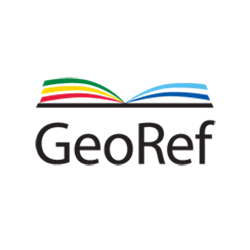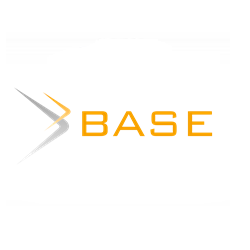Una extensión del marco iStar como alternativa para apoyar las decisiones de diseño en el análisis de tareas realizado en el Área de Interacción Persona-Ordenador (HCI)
DOI:
https://doi.org/10.17981/ingecuc.18.2.2022.05Palabras clave:
Task Analysis, GOMS, Intentional Modeling, Framework i*, HTAResumen
Introducción— El objetivo de este trabajo es presentar i* framework como alternativa para dar soporte a las decisiones de diseño en el Área de Interacción Persona-Ordenador (HCI), principalmente, en el proceso de análisis de tareas. Mostramos i* framework un lenguaje de modelado adecuado para una fase temprana de modelado de sistemas software para entender el dominio del problema, además, que proporciona métodos para representar tareas, así como apoyar las decisiones de diseño el desarrollo que satisfaga los requisitos del proceso desde el principio hasta el final. Para lograr nuestro objetivo, se abordan enfoques para analizar notaciones destinadas al análisis de tareas y su representación. Finalmente, presentamos sugerencias de mejora en el marco i* a través de una propuesta de extensión para refinar el modelo de tareas, instanciando ejemplos y justificando nuestra propuesta a través de la revisión por pares.
Descargas
Citas
X. Yang, J. Hyup Kim, & R. Nazareth, “Hierarchical task analysis for driving under divided attention,” Proc. Hum. Factors Ergon. Soc. Annu. Meet., vol. 63, no. 1, pp. 1744–1748, Nov. 2019. https://doi.org/10.1177/1071181319631022
D. Kieras, “GOMS models for task analysis,” UMich, Mich, USA, Analysis, 2004. Available from https://web.eecs.umich.edu/~kieras/docs/TA_Modeling/GOMSforTA.pdf
E. Yu, P. Giorgini, N. Maiden, J. Mylopoulos & S. Fickas, “Strengths and Weaknesses of the i* Framework: An Empirical Evaluation”, in E. Yu, P. Giorgini, N. Maiden, J. Mylopoulos & S. Fickas, Social Modeling for Requirements Engineering, Cambs, MAS, USA: The MIT Press, 2011, pp. 607–643. https://doi.org/10.7551/mitpress/7549.003.0025
F. Dalpiaz, X. Franch & J. Horkoff, “iStar 2.0 Language Guide,” arXiv [cs.SE , 2016. Available: https://arxiv.org/abs/1605.07767
D. Kieras & B. John, “The GOMS Family of Analysis Techniques: Tools for Design and Evaluation”, School of Computer Science, CMU, PGH, PA, USA, CMU-CS-94-181, 1994. Available from https://web.eecs.umich.edu/~kieras/docs/GOMS/John-Kieras-TR94.pdf
E. Yu, P. Giorgini, N. Maiden, J. Mylopoulos & S. Fickas, “Modeling strategic relationships for process reengineering,”, in E. Yu, P. Giorgini, N. Maiden, J. Mylopoulos & S. Fickas, Social Modeling for Requirements Engineering, Cambs, MAS, USA: The MIT Press, 2011, pp. 111–152. https://doi.org/10.7551/mitpress/7549.003.0005
G. Gema. (2006, Aug). I*wiki [Online . Available: http://istar.rwth-aachen.de/tiki-index.php?page=iStarQuickGuide. Available: http://istar.rwth-aachen.de/tiki-index.php?page=iStarQuickGuide
E. Yu, P. Giorgini, N. Maiden, J. Mylopoulos & S. Fickas, “A Reference Model for i*”, in E. Yu, P. Giorgini, N. Maiden, J. Mylopoulos & S. Fickas, Social Modeling for Requirements Engineering, Cambs, MAS, USA: The MIT Press, 2010, ch. 17. https://doi.org/10.7551/mitpress/7549.003.0024
A. Dix, J. Finlay, G. Abowd & R. Beale, Human-computer interaction, 3rd ed. NY, NY, USA: Pearson, 2004.
S. Barbosa & B. da Silva, Interação Humano-Computador. RJ, BR: Elsevier, 2010.
D. Norman & S. Draper, Cognitive engineering, In User Centered System Design: New Perspectives on Human-computer Interaction. HLLSDL, NJ, USA: LEA Inc. Pub, 1986.
O. Ayalon & E. Toch, “User-centered privacy-by-design: Evaluating the appropriateness of design prototypes”, Int. J. Hum. Comput. Stud., vol. 154, no. 4, pp. 1–10, Oct. 2021. https://doi.org/10.1016/j.ijhcs.2021.102641 CONFIRMAR PAGS.
S. Card, T. Thomas & A. Newell, The Psychology of Human-Computer Interaction. LDN, UK: Lawrence Erbaum Associates, 1983.
E. Yu, P. Giorgini, N. Maiden, J. Mylopoulos & S. Fickas, “Secure Tropos: Extending i* and Tropos to Model Security Throughout the Development Process,” in E. Yu, P. Giorgini, N. Maiden, J. Mylopoulos & S. Fickas, Social Modeling for Requirements Engineering, Cambs, MAS, USA: The MIT Press, 2011, pp. 363–402. https://doi.org/10.7551/mitpress/7549.003.0015
D. Moody, “The ‘Physics’ of Notations: Toward a Scientific Basis for Constructing Visual Notations in Software Engineering”, IEEE Trans. Software Eng., vol. 35, no. 6, pp. 756–779, Dec. 2009. Available: https://ieeexplore.ieee.org/document/5353439
D. Moody, P. Heymans, & R. Matulevicius, “Improving the Effectiveness of Visual Representations in Requirements Engineering: An Evaluation of i* Visual Syntax”, presented at 17th International Requirements Engineering Conference, IEEE, ATL, GA, USA, 31 Aug. - 4 Sept. 2009. https://doi.org/10.1109/RE.2009.44
T. Green, “Cognitive Dimensions of Notations Resource Site,” CAM.AC [Online . Available: http://www.cl.cam.ac.uk/%7Eafb21/CognitiveDimensions/
T. Green, “Instructions and descriptions: some cognitive aspects of programming and similar activities”, in S. Levialdi, V. Di Gesù & L. Tarantino (Less), AVI´oo: Proceedings of the Working Conference on Advanced Visual Inter- faces, NYC, NY, USA, ACM, 2000, pp. 21–28. https://doi.org/10.1145/345513.345233
A. Blackwell & T. Green, “Notational systems -- the cognitive dimensions of notations framework”, in J. M. Carroll, HCI Models Theories and Frameworks: Toward a multidisciplinary science. SF, CA, USA: Morgan Kaufmann Publisher, 2003, pp. 103–134. Available: https://www.elsevier.com/books/hci-models-theories-and-frameworks/carroll/978-1-55860-808-5
C. Blanco y P. Sánchez, “Aplicando evaluación por pares: análisis y comparativa de distintas técnicas”, presentado al Actas Simposio-Taller JENUI, UJI, CD REAL, ES, 10-13 Jul. 2012. Recuperado de https://core.ac.uk/download/pdf/41791778.pdf
M. Serrano & J. Leite, “A rich traceability model for social interactions”, presented at TEFSE ‘11: 6th International Workshop on Traceability in Emerging Forms of Software Engineering, ACM, WAI, HI, USA, 23 May. 2011. https://doi.org/10.1145/1987856.1987871
E. Yu, P. Giorgini, N. Maiden, J. Mylopoulos & S. Fickas, “Analyzing the Effectiveness of Human Activity System with i*,” in E. Yu, P. Giorgini, N. Maiden, J. Mylopoulos & S. Fickas, Social Modeling for Requirements Engineering, Cambs, MAS, USA: The MIT Press, 2011, pp. 669–691. https://doi.org/10.7551/mitpress/7549.003.0027
R. Eberts, User Interface Design. LDN, UK: Prentice-Hall, 1994.
S. Munir & A. Nadeem, “Cognitive modelling for user interface design in HCI: A comparative analysis on cognitive models,” LGU J. Comp. Sci. Info. Tec., vol. 4, no. 2, pp. 117–129, Jun. 2020. https://doi.org/10.54692/lgurjcsit.2020.0402138
R. Prates & S. Barbosa, “Introdução à Teoria e Prática da Interação Humano Computador fundamentada na Engenharia Semiótica”, submetido ao XXVII Congresso da Sociedade Brasileira de Computação Jornadas de Atualização em Informática, JAI, RJ, BR, 18-23 Jun. 2007. Available from http://www3.serg.inf.puc-rio.br/docs/JAI2007_PratesBarbosa_EngSem.pdf
F. Paternò, “ConcurTaskTrees: An Engineered Approach to Model-Based Design of Interative Systems”, In D. Diaper & N. A. Stanton, The Handbook of Analysis for Human Computer Interaction, MHW, NJ, USA: LEA, 2002, pp. 483–501. Available from http://giove.isti.cnr.it/attachments/publications/2003-A1-07.pdf
A. Oliveira, Engenharia de Requisitos Intencional: Um Método de Elicitação, Modelagem e Análise de Requisitos. RJ, BR: PUC Rio. 2009. Available: https://www.maxwell.vrac.puc-rio.br/colecao.php?strSecao=resultado&nrSeq=13061@1
J. Nielsen, Usability Engineering. SN FCO, CA, USA: Morgan Kaufmann, 1994. Available: https://www.nngroup.com/books/usability-engineering/
X. Zhou, F. Teng, X. Du, J. Li, M. Jin, & C. Xue, “H-GOMS: a model for evaluating a virtual-hand interaction system in virtual environments”, Virtual Reality, pp. 1–26, Jul. 2022. https://doi.org/10.1007/s10055-022-00674-y
P. Setthawong & R. Setthawong, “Updated Goals Operators Methods and Selection Rules (GOMS) with Touch Screen Operations for Quantitative Analysis of User Interfaces”, Int. J. Adv. Sci. Eng. Inf. Technol., vol. 9, no. 1, pp. 258–265, Jan. 2019. https://doi.org/10.18517/ijaseit.9.1.7865
D. Cunha, R. Duarte & C. Cunha, “KLM-GOMS Detection of Interaction Patterns Through the Execution of Unplanned Tasks”, In ICCSA 2021, Computational Science and Its Applications. CAL, IT: Springer, 2021, pp. 203–219. https://doi.org/10.1007/978-3-030-86960-1_15

Descargas
Publicado
Cómo citar
Número
Sección
Licencia
Derechos de autor 2022 INGE CUC

Esta obra está bajo una licencia internacional Creative Commons Atribución-NoComercial-SinDerivadas 4.0.
Los artículos publicados son de exclusiva responsabilidad de sus autores y no reflejan necesariamente las opiniones del comité editorial.
La Revista INGE CUC respeta los derechos morales de sus autores, los cuales ceden al comité editorial los derechos patrimoniales del material publicado. A su vez, los autores informan que el presente trabajo es inédito y no ha sido publicado anteriormente.
Todos los artículos están bajo una Licencia Creative Commons Atribución-NoComercial-SinDerivadas 4.0 Internacional.


 English
English
 Español (España)
Español (España)























